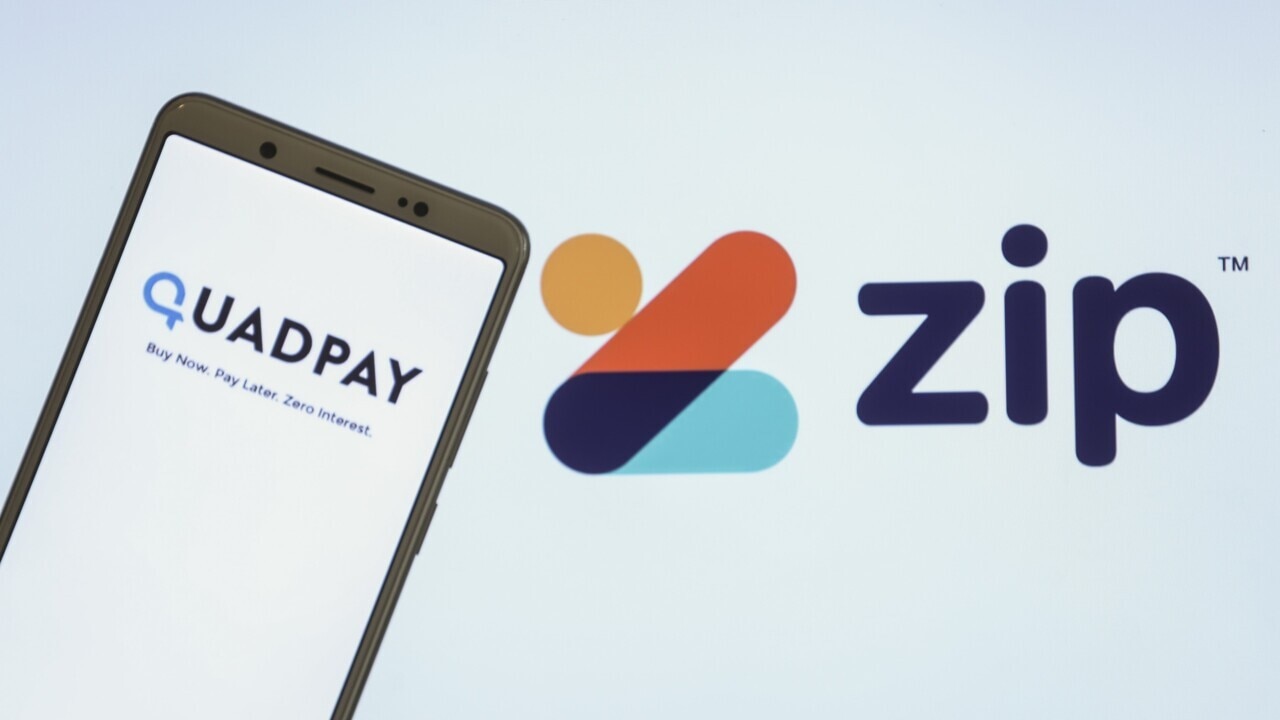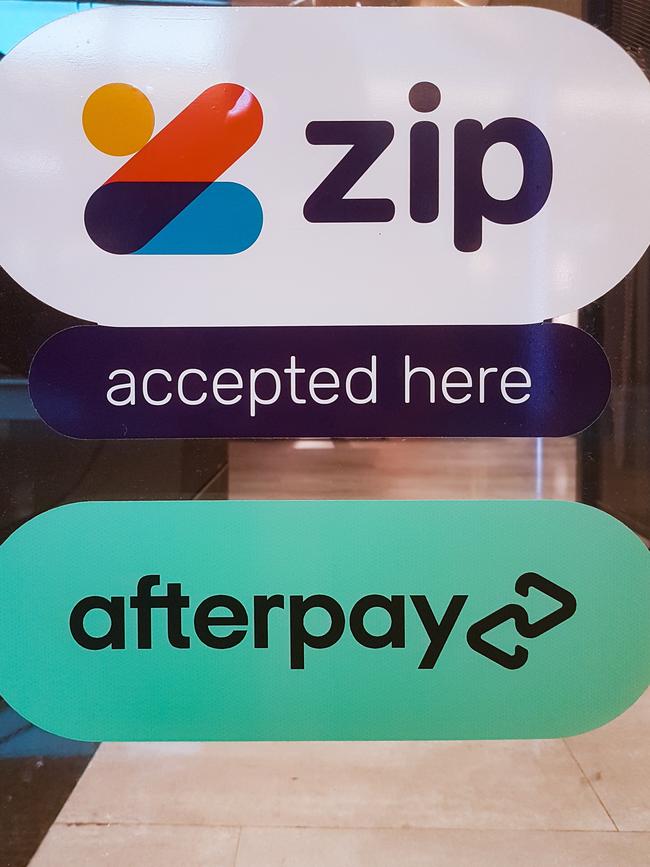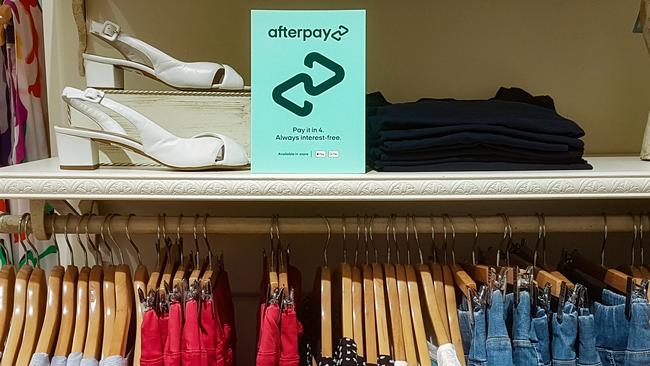ING, Macquarie to take into account BNPL when assessing home loan applications
Two major lenders will now take into account buy now, pay later debts when assessing whether a prospective borrower can service a home loan.

ING and Macquarie Bank are quietly bringing buy now, pay later debts into their respective home loan serviceability tests, as interest rates rise and banks prepare for more borrowers to face financial hardship.
Information sent to mortgage brokers, obtained by The Australian, showed both banks were separately moving this week to include BNPL debts in their assessments of a borrower’s ability to repay a mortgage or other loan.
ING told brokers that BNPL arrangements with an ongoing limit were “to be recorded and treated as credit card liabilities” for loan servicing purposes, but noted short-term BNPL debts could be excluded.
“BNPL arrangements with a remaining term (ie instalment plan) are to be recorded and treated like personal loans, where the amount outstanding and total monthly repayment are used for servicing,” the email said.

“Where a BNPL facility is short term and temporary in nature, and confirmation is provided to this effect, the commitment can be removed for servicing purposes. Please ensure this information is noted on the application.”
Macquarie told brokers it was updating its credit policy to include BNPL commitments in both the bank’s debt-to-income ratio and loan serviceability calculations.
The changes were effective from December 19, but Macquarie is allowing a grace period on enforcing them until January 3.
“BNPL will need to be captured in ApplyOnline and the serviceability calculator. Our new serviceability calculator includes this BNPL update and the most recent version of the Household Expenditure Measure (HEM),” the email said.
“Applications submitted from 3 January, 2023 onwards will only be accepted on the December 2022 version of the serviceability calculator.”
ING’s changes also told brokers that outstanding Higher Education Contribution Scheme (HECS) or Higher Education Loan Program (HELP) debt amounts should be included in the loan serviceability assessment.
To align with its lenders’ mortgage insurer’s policy on “high-risk postcodes”, ING is increasing the minimum required deposit to 10 per cent from 5 per cent.
Some of the major banks don’t count BNPL debt if the borrower is an irregular user of the product, but several expect customers to declare the debt to the lender if they are a regular user. The major banks don’t typically ask borrowers to specifically disclose BNPL debts.

The changes on BNPL debts by ING and Macquarie come amid expectations the Reserve Bank will continue to raise the official interest rate in 2023, after jacking up borrowing costs by 3 percentage points since May in order to cool inflation.
The Australian Prudential Regulation Authority in June provided guidance telling banks that they should collect data on buy now, pay later accounts to be able to report accurate debt-to-income ratio figures to the regulator. The ratio measures the credit limit of all the borrower’s debts to their gross income.
“To ensure a consistent approach is taken across industry, APRA has clarified below that HECS-HELP loans and debt incurred through BNPL schemes would be included in DTI ratios,” the regulator said. The notification noted banks should begin doing this by the year’s end.
APRA doesn’t, however, mandate that banks include BNPL or other debts when they assess whether a borrower can service a loan.
The regulator wants to have a clear picture of how the economy is faring as higher rates are tipped to cause a slowdown in growth next year, and more loan losses. That comes as the federal government considers bringing BNPL into the regulatory net, given providers are not bound by rules to conduct credit checks on users. Submissions on three proposed models for regulation must be submitted to Treasury by Friday.
The options paper released for consultation highlighted that many BNPL players did not report information to credit-scoring bureaus.
“BNPL providers generally do not report default information to the credit reporting system, nor do they report information on credit limits, repayment history and outstanding balances. As a result, there may be problematic gaps in a person’s credit file due to the non-reporting of BNPL debts to the comprehensive credit reporting framework, noting that these amounts are typically small,” the paper said.

The University of Sydney Business School on Thursday released a study that found that more than 10 per cent of BNPL users were at “high risk” of financial harm.
It analysed 2021 transaction data of 819,415 BNPL consumers from a major Australian financial institution to gauge the spending habits of about one in four adults who use the products.
The report found the average age of users was 33 and about 40 per cent of BNPL users had more than one account.
Those who had more than one account were more likely to be from lower socio-economic areas, receiving government benefits, had higher credit card utilisation rates and use personal loans.
The report called for regulation of the sector so that users were assessed when applying in a similar way to other forms of credit.
“Essentially, we have an entire segment of the credit market that is invisible to other banks and lenders, which is problematic,” said Dr Andrew Grant, senior finance lecturer at the University of Sydney Business School and the study’s co-author.
“What people under financial stress tend to do is get to their credit limit, and then they sign up for a buy now pay later product to get access to more funds. They’re already in financial stress and then they get more credit.”
The report found 77 per cent of BNPL consumers were at “very low to low risk” of missing three or more payments over the coming 12 months.
“There’s a significant proportion, particularly those that have multiple accounts, that are in serious financial difficulty,” said David Grafton, the study’s co-author and an honorary associate at the university’s business school.
“Buy now pay later needs to be regulated in line with any other credit product.”
Dr Grant added: “These services have so far only existed in a low-interest rate environment in Australia. Now that interest rates are rising and inflation is biting, we can expect to see more people experience financial difficulty in the year to come.”








To join the conversation, please log in. Don't have an account? Register
Join the conversation, you are commenting as Logout